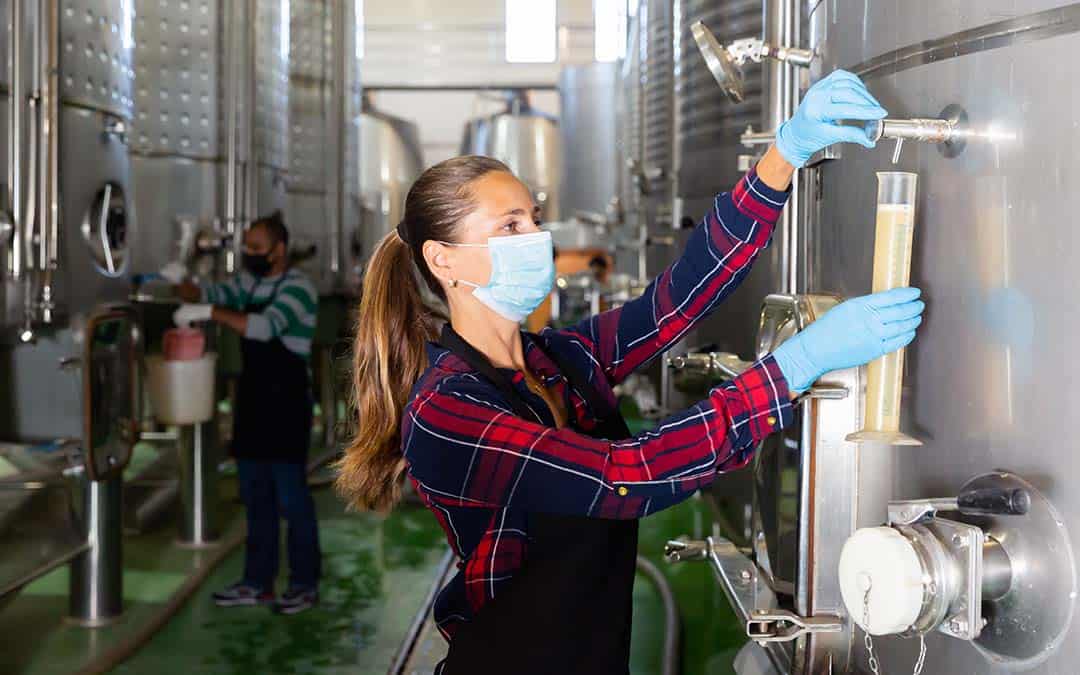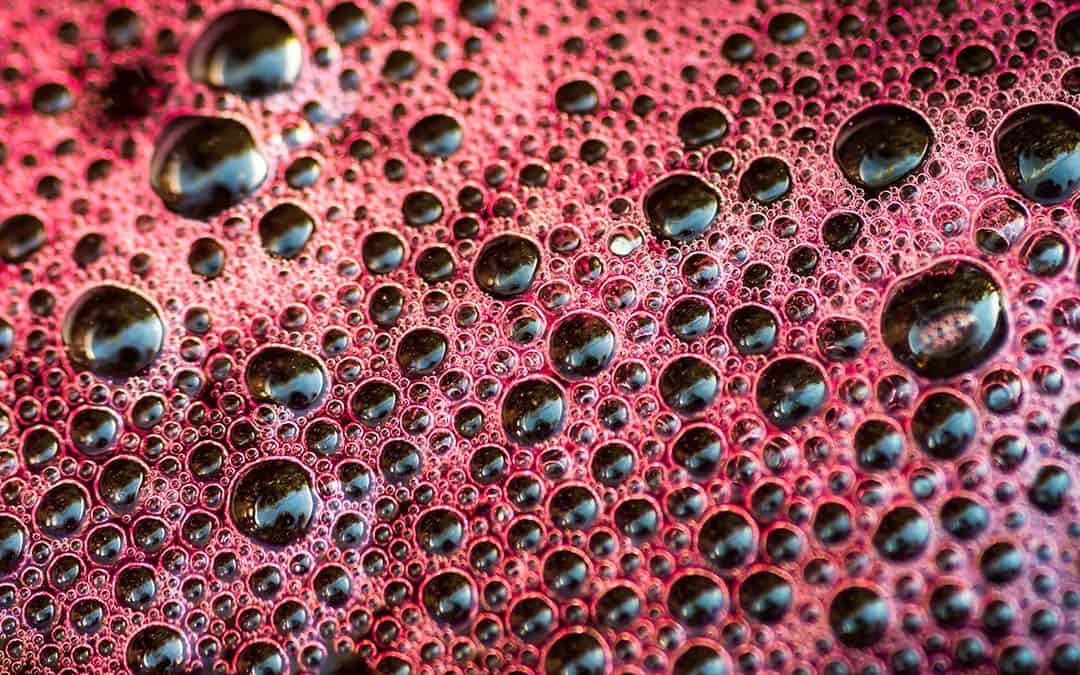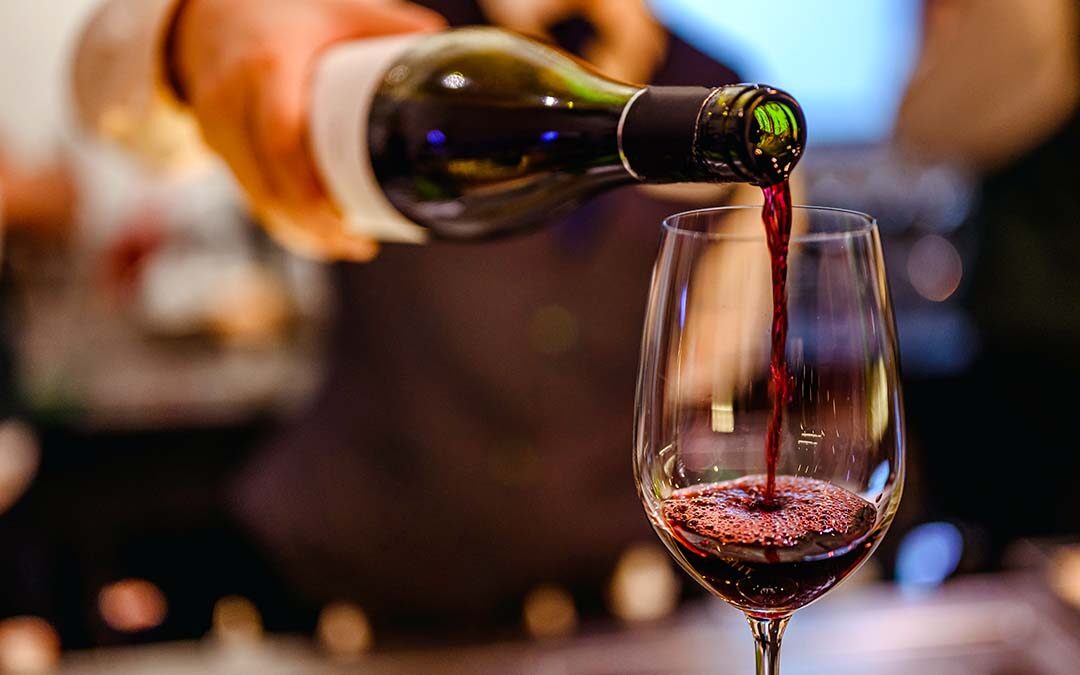Ever wondered what that burst of rising vapor is when you uncork a bottle of wine? Or why we grimace at the taste of wine that’s been left uncorked a bit too long? Short answer: gas. Gas plays a large role in the winemaking process, especially when shielding the quality and longevity of wine from the effects of oxidation. Wine lovers know how important it is to keep wine away from over-oxidation, and viticulturists know how – through the use of inert gasses.
How Gas Protects Wine From Oxidation

There are few who haven’t had the displeasure of tasting sour wine. One way wine can spoil is through the chemical reaction known as oxidation. When wine is exposed to too much oxygen at any part of the wine-making (and drinking) process, sulfites, bacteria, and yeast can grow leading to an unappetizing taste.
In order to prevent this, winemakers have used inert gasses (as in, the gasses that do not react in a given set of conditions) to protect wines from this kind of spoiling. From blanketing, flushing, sparging, transferring, and dispensing, inert gasses have been used to stop the oxidation process.
Which Gasses?

The primary atmospheric gasses used in the winemaking process are argon, carbon dioxide, nitrogen, and yes, even oxygen!
Argon
is a large favorite of winemakers, due to its ability in creating a barrier between oxygen and wine in the headspace of wine containers. It can displace oxygen in spaces as small as bottles or as large as barrels, without any effect on the wine. Just by adding a drop of this gas into the headspace of a bottle before corking will maintain the wine’s freshness, making it ideal for purging and blanketing. Argon is also widely preferred for blanketing wine tanks, carboys, and barrels due to its density. Although effective, argon remains the most expensive gas to use out of the aforementioned.
Carbon dioxide
is a popular gas to use, especially during the early stages of wine. It should be noted that carbon dioxide must be mindfully used, as its carbonating abilities can dramatically affect a wine. While great for sparkling white wines, too much carbon dioxide can make reds too tannic.
Nitrogen
is very abundant in the atmosphere, making this gas available at lower costs than those previously listed. This versatile gas can be used at any part of the winemaking process. Particularly when sparging wine (where gas is bubbled through the wine), both argon and nitrogen can help take up oxygen and carbon dioxide once the bubble leaves the top. However if one is trying to make a particular wine that requires some levels of dissolved carbon dioxide, it may be more advantageous to use a nitrogen/carbon dioxide blend to avoid over-removal of carbon dioxide.
Oxygen
may seem to be oxymoronic due to the sometimes detrimental effects of oxidation. But, oxygen plays an important role in the fermentation process due to its yeast boosting properties. A aging technique called sur lies utilizes lees, the mostly dead yeasts cells that are a byproduct of fermentation. The wine is kept in contact with its lees, and the lees can act as some protection from oxidation. Due to this, aromatic and full-bodied wines can be developed without a trace of oxidation.
If you’re a winemaker looking to improve your winemaking process, or a small business in need of food-grade gasses, Calox can fulfill all your gas needs. CalOx has been delivering food-grade, high-quality gasses to communities in Southern California for more than 80 years. With trained technicians, we can help your business with everything from regular deliveries to storage, delivery and handling equipment, along with training and maintenance.
